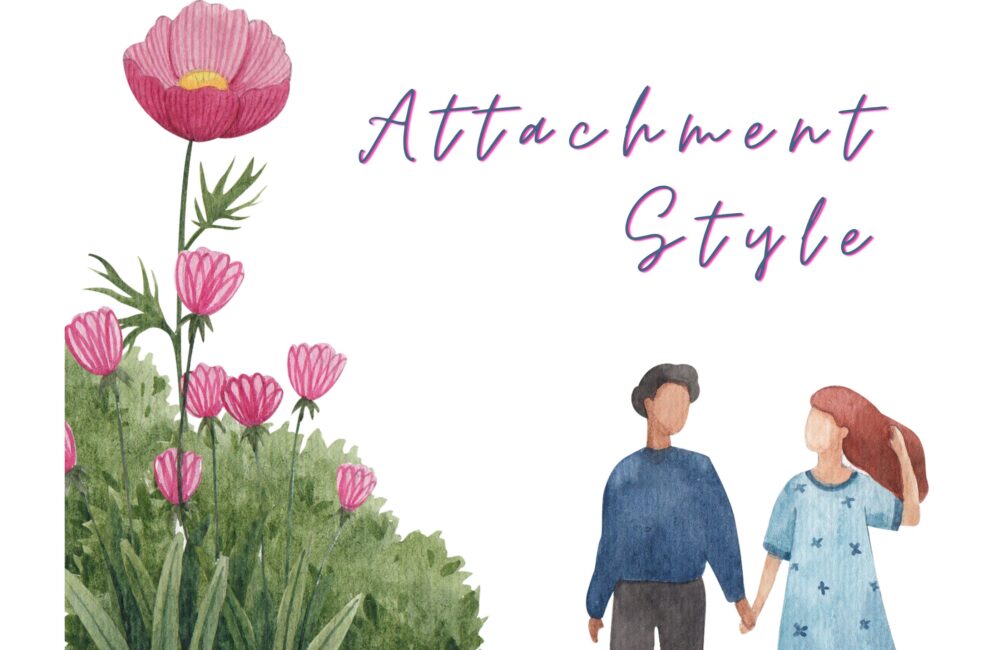Identifying attachment styles means recognizing and understanding emotional bonds and connections with others. This provides insights into communication patterns, coping mechanisms, and overall relationship dynamics. Also, it says a lot about how you feel about yourself.
Assessing attachment style involves examining emotional responses. Since attachment style is rooted in childhood, its effect can be seen on a person’s personality in adulthood. If their day-to-day life is being affected by their attachment style, they ought to consider seeing professionals. As per CDR writing experts, professionals such as therapists use attachment theory and other psychological practices to guide them to develop healthier connections. For this, here are types of attachment styles that will help you identify your attachment style.
Attachment Styles: Which one is yours?
Psychologists have classified four attachment styles. These styles are based on the quality of care and responsiveness received from caregivers, who are usually parents or guardians.
Here are the classifications that will help you understand your attachment styles.
1. Secure Attachment Style
A secure attachment style has the ability to build healthy and positive relationships. It means if you have this attachment style, people feel comfortable with emotional intimacy, you can express your needs, and you can trust your partners to be responsive and supportive.
In this context, children with this style feel safe, valued, understood, and comforted by their caregivers. Whereas, secure attachment in adults means you feel safe and confident in your relationships. You openly share your feelings and seek out social support when you need it.
Following are the signs that a person with a secure attachment style shows.
- Trust others easily.
- Communicate effectively.
- Regulate your emotions.
- Feel comfortable while spending time alone.
- Connect with others easily.
- Healthily manage conflict.
- Making yourself emotionally available for the people in your life.
2. Anxious Attachment Style
Anxious attachment is a type of insecure attachment style. It is a pattern of behavior defined by greater vulnerability to fear of rejection and abandonment. For instance, if you have an anxious attachment, then you are overly concerned about the stability of your relations and seek constant reassurance.
Anxious attachment styles display tendencies such as fear of being alone and difficulty trusting that their emotional support will be consistently met. This type of attachment style is rooted in early childhood.
Following are the signs that a person with an Anxious attachment style shows:
- Feelings of unworthiness.
- High sensitivity to criticism.
- Difficulty spending time alone.
- Low self-esteem.
- Difficulty trusting other people.
- Feelings of jealousy.
- Fear of rejection or abandonment.
3. Avoidant Attachment Style
The Avoidant attachment style is another type of insecure attachment. In this situation, a person finds difficulty building relationships due to a fear of attachment. Therefore, people with this attachment prioritize independence and self-reliance, avoiding emotional closeness and connection with others.
People with an avoidant attachment style find it difficult to express their emotions. They hesitate to ask for support, which leads them to learn self-reliance as a way to cope. This type of attachment is rooted in early childhood, where the caregiver may not have constantly met the individual’s emotional needs.
Following are the signs that a person with an Avoidant attachment style shows:
- Feel a strong sense of independence.
- Dismiss others easily.
- Have difficulty trusting others.
- Feel uncomfortable when people get close.
- Avoid intimacy (emotional or physical).
- Have commitment issues.
4. Disorganized Attachment Style
The disorganized attachment style is a pattern of behavior that lacks a consistent and organized approach. In this way, people exhibit incorporated behavior and find it difficult to trust others.
This attachment style is incorporated in early childhood. It is the result of the experience of both comfort and fear from the same caregiver. Consequently, children with this style appear confused, fearing something bad will happen. Similarly, adults crave affection and belonging, yet they fear attachments.
Following are the signs that a person with a disorganized attachment style shows:
- Difficulty trusting others.
- Trouble regulating your emotions.
- Signs of anxious and avoidant attachment styles.
- A fear of rejection.
- Confusing or contradictory behaviors.
General Approach to Understanding Your Attachment Style

1. Examine Your Level of Self-Esteem
Examining self-esteem refers to the overall examination of your subjective evaluation and perception. It is not a direct measure of personality assessment. However, examining self-esteem offers insights into certain personality traits and behaviors.
It is important to understand that the way parents treat their children affects their self-esteem for the rest of their lives. Therefore, How you feel about yourself is a good indicator of what attachment style you have adopted.
Here are some questions that will help you evaluate yourself. Be honest with yourself while answering these questions and you will get the most reliable answer.
- Are you happy with yourself or do you have feelings of self-hatred?
- Do you value yourself or do you think you are worthless?
2. Ask Yourself How You Respond to Any Argument
Analyzing how you respond to arguments reveals some aspects of your personality. It reveals how you handle conflict in different situations.
Generally, attachment styles are rooted in early childhood. In the same sense, the way you respond to arguments comes from childhood. In this context, you learn responses from the way you see your parents behave in an argument.
Here are some questions that will help you evaluate your attachment style:.
- Do you stay calm in arguments or walk away and try to avoid the situation altogether?
- Do you scream, lash out, name-call, and vow to “get even” during a fight?
3. Think About Your Romantic Relationship
Your romantic relationship determines your attachment style. The way you respond to your partner and how attached you become says a lot.
Relation comprises expressing affection, handling conflicts, and communicating needs within a romantic relationship. This indeed speaks a lot about your communication skills and Conflict resolution skills.
Here are some questions that will help you evaluate yourself. Be honest with yourself while answering these questions and you will get the most reliable answer.
- Ask yourself if you are open to love and intimacy or if you shy away when someone wants to get close.
- Are you constantly worried your partner will leave you, and do you become clingy early on in the relationship?
4. Ask People Close to You For Their Opinions
Asking close ones for their opinion is the best way to assess your personality. It can be difficult to assess your own personality because you are so close to the situation.
People often have blind spots of self-perception that are not aligned with how others perceive them. Therefore, You ought to ask your partner, parents, or close friends to give their opinion on how you behave.
Hence, when seeking an opinion, you must approach it with an open mind. You can consider these questions while asking others for your opinion.
- Are there situations where you’ve seen me respond particularly well or struggle?
- Do you think I effectively express myself and listen to others?
Approach with an open mind while asking these questions. Encourage them to provide honest feedback and be prepared to reflect on the responses you receive
Does the Relationship With the Childhood Caregiver Shape Attachment Style?
Yes, the relationship with the childhood caregiver shapes the attachment style in a person. As the interaction between infant and caregiver shapes the pattern for attachment style, it is childhood that roots the attachment style in you.
As much as it is important to consider that attachment styles are shaped in early childhood. it is also important to consider that they are not fixed and can be influenced by life experience and relationships.
Can I Change My Attachment Style?
Yes, you can change your attachment style. Although they are shaped in early childhood based on experience with caregivers, they are not immune from change.
Throughout your life, you can develop and gain experience that contributes to changing attachment styles. However, it is important to remember that change takes time and effort. The key is a commitment to self-reflection, personal growth, and building healthier relationship patterns.
Some strategies to help you change attachment styles are:
- Self-awareness
- Therapy and Counseling
- Mindfulness and Emotional Regulation
- Developing communication skills
Wrapping Up
Attachment styles, rooted in childhood, influence emotional connections. Identifying and understanding your style is key to healthier relationships. While shaped early, attachment styles can change through self-awareness and positive experiences.
Recognizing your attachment styles can provide valuable insights into your overall relationship dynamics. Although your attachment styles are shaped by early experiences, they are not static. You can change and develop more secure patterns through self-awareness, therapy, and positive relationship experiences.
Similarly, evaluating your personality includes considering self-esteem, responses to arguments, and the dynamics of your romantic relationships. Hence, the best way to assess your attachment style is by asking for feedback from someone close to you. You just have to approach it with an open mind.
Frequently Asked Questions
Which attachment style is the happiest?
Secure attachment style is the happiest of other attachment styles. Studies show that people who are securely attached have the healthiest relationships, and it’s the type that everyone should strive for.
Can you fix insecure attachments?
Yes, you can fix insecure attachment styles. It is never too late to treat and repair attachment issues, the earlier you spot the symptoms of insecure attachment and take steps to repair them, the better.
how can you identify a secure attachment?
People with secure attachment tend to feel safe, stable, and more satisfied in their close relationships. While they don’t fear being on their own, they usually thrive in close, meaningful relationships.
Is personality and attachment style relatable?
Yes, personality and attachment style are relatable. They influence each other as the Attachment style is developed in early childhood based on interactions with caregivers; it shapes certain aspects of your personality.















